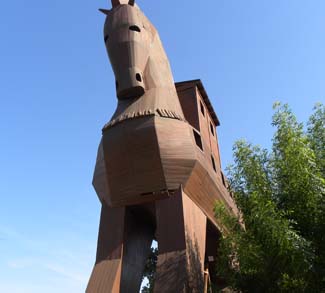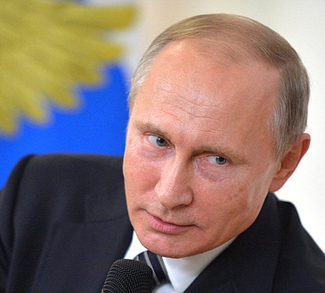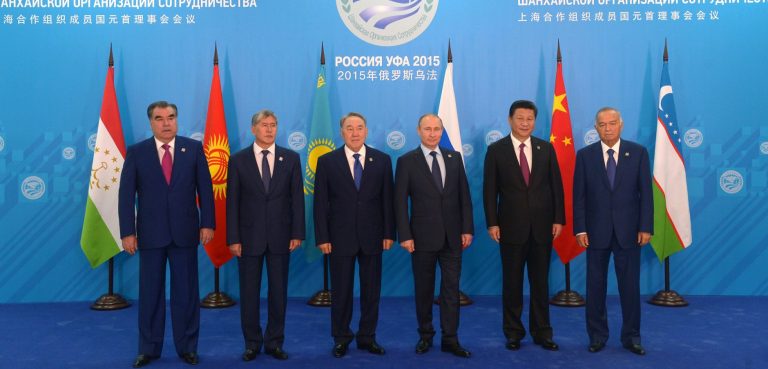The world was caught off guard by Ukraine’s bold and daring incursion into the Kursk region of Russia on August 6. This surprise attack by a smaller nation against a nuclear power has shattered Russian President Vladimir Putin’s carefully constructed narrative of greatness and invincibility. While Western observers have primarily focused on the tactical advances made by Ukrainian forces, this attack has also unveiled more profound strategic vulnerabilities of Russia’s standing as a supposed great power. Notably, even Russia’s closest allies within the Collective Security Treaty Organization (CSTO)–Armenia, Belarus, Kazakhstan, Kyrgyzstan, and Tajikistan–have provided neither military nor political backing, leaving Moscow isolated in this conflict.
The CSTO, established in 2002, was initially intended to counter external aggression against its members and harmonize foreign policy stances. Much like Article Five of the North Atlantic Treaty, the CSTO members are bound by the principles of collective defense. Article Four of the organization’s charter states that if a bloc member is subjected to aggression by another state or group of states, it will be considered an attack on all members. However, the stark inaction of Russian allies within the CSTO in response to the recent Kursk incursion can be viewed as a final and decisive blow to the credibility of the Moscow-led military-political alliance, reducing it to a mere ‘paper tiger.’
This is not the first time the CSTO’s impotence has come to the fore. Previously, President Alexander Lukashenko of Belarus criticized the alliance for ignoring Kyrgyzstan’s request for assistance during ethnic clashes in 2010, asking: “What sort of organization is this if there is bloodshed in one of our member states… and this body keeps silent?” Furthermore, Uzbekistan’s withdrawal from the CSTO twice–first in 1999 and then again in 2012–exposed fractures within the alliance. More recently, Armenia suspended its participation in the bloc after the CSTO failed to honor its commitments when Azerbaijan regained control of its breakaway region of Nagorno-Karabakh in September 2022. These instances have not just underscored the paper structure of the Moscow-led security bloc but also fueled a growing disillusionment with the alliance, casting a shadow of doubt on its credibility.
The CSTO’s failure to uphold collective defense is compounded by a lack of solidarity among its members. Recent reporting by POLITICO reveals that Belarus provided Azerbaijan with military aid and advanced weapons, including state-of-the-art artillery targeting equipment and Groza-S counter-drone mobile warfare stations, between 2018 and 2022. Despite being allies within the CSTO, Belarusian weapons were extensively used in combat against Armenia, a fellow CSTO member, during the 2020 Karabakh War. President Lukashenko’s public description of Azerbaijani President Ilham Aliyev as “our man” and his assertion that it would be “wrong” for the CSTO to oppose him, underscore the absence of genuine solidarity within the bloc, revealing deep-seated divisions.
If these events undermined the bloc’s reputation layer by layer, then the CSTO’s inaction and the “coordinated silence” of Kremlin allies amid Ukraine’s direct intervention into Russian territory have dealt a final blow to the CSTO, increasing Moscow’s isolation and dispelling myths about the bloc’s collective defense obligations. Strikingly, even Putin’s close ally Lukashenko, who remains persona non grata in the West, did not come to Russia’s defense. Instead, he deployed additional troops and armored vehicles to defend the borders of Belarus and even called for an end to the war, stating in an interview with a Russian journalist: “Let’s sit down at the negotiating table and end this scuffle.” The statement suggests that Belarus may be scaling back even its rhetorical support for Russia’s war in Ukraine.
The coordinated silence from Central Asia’s five nations, theoretically aligned with Russia through the CSTO or the Treaty of Allied Relations, further illustrates Moscow’s growing isolation. Unlike Russia, which has used the CSTO to preserve its regional dominance and protect its self-declared “privileged interests” in post-Soviet space, Central Asian nations utilize the bloc to counter transnational threats such as terrorism and receive Russian weapons and military training. The arrangement has allowed Central Asian states to avoid potential Russian military interventions while keeping their suspicious “friend” closer.
Russia’s faltering war in Ukraine and the subsequent Kursk incursion have opened a new window of opportunity for Central Asia to enhance regional cooperation and potential integration among themselves without external powers—a scenario that, until recently, seemed unlikely.
For years, one of the major stumbling blocks for Central Asia integration has always been Russia, which has consistently sought to forestall any attempts to diversify trade and gas pipelines and disrupt potential integration processes among the region’s five nations. However, due to its military operation in Ukraine, Russia has to reorient its war machine toward the latter. For instance, Moscow has redeployed 1,500 troops from a Russian military base in Tajikistan to Ukraine. While the withdrawal of hundreds of Russian troops from Armenia’s border does not directly impact Central Asia, it signals the deterioration of the Kremlin’s military and political influence, significantly affecting the region’s security environment.
This shifting dynamic was evident at the recent sixth consultative meeting of Central Asian heads of state in Astana, held on August 9, where a newfound resolve to institutionalize economic and defense cooperation emerged. Uzbekistan’s President Shavkat Mirziyoyev highlighted the geopolitical challenges facing the region, stating, “Central Asia, due to its geopolitical position, is experiencing the negative consequences of the global trust crisis and the escalation of conflicts… and we have become prisoners of the policy of sanctions,” a clear reference to the detrimental effects of Russia’s actions in Ukraine.
Amid these developments, Kazakhstan’s President Kassym-Jomart Tokayev published an article titled “Renaissance of Central Asia: Towards Sustainable Development and Prosperity” in Kazakhstanskaya Pravda, calling for coordination of regional security and defense policies among the five Central Asian republics. President Tokayev’s vision of a more integrated and prosperous Central Asia, free from Russia’s overbearing influence, suggests a potential shift in the region’s geopolitical dynamics that could drastically alter existing alliances and power structures.
These evolving dynamics present a strategic opportunity for Western powers. Central Asia, located at the heart of Eurasia, now offers a crucial opportunity for the United States to reassert its influence in the region, particularly in light of the credibility lost after the withdrawal from Afghanistan. A strong, integrated Central Asia aligns well with the objectives of the US Strategy for Central Asia 2019-2025, which emphasizes strengthening the sovereignty and independence of the Central Asian states through enhanced connectivity.
Without pushing Central Asian states into picking sides, which might be counter-effective, Washington should increase its engagement with Central Asian nations and support their effort to foster regional integration with any neighboring external actors, acting as a unified single voice in international political and economic relations.
Alouddin Komilov is a chief research fellow at the Center for Progressive Reforms (CPR).
Otabek Akromov is a PhD researcher in Political Science at the University of Minnesota and a policy analyst at the CPR.
Mirshohid Aslanov is the co-founder and CEO of the CPR.
The views expressed in this article belong to the author(s) alone and do not necessarily reflect those of Geopoliticalmonitor.com.




